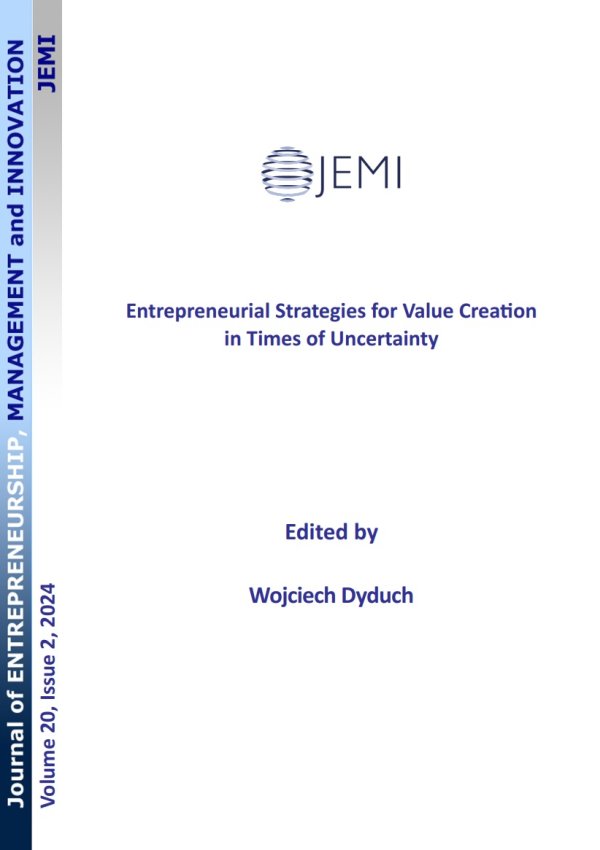Edyta Bielińska-Dusza, Ph.D., Assistant Professor, Department of Department of Strategic Analysis, Institute of Management, College of Management and Quality, Cracow University of Economics, Rakowicka 27, 31-510 Krakow, Poland, email: This email address is being protected from spambots. You need JavaScript enabled to view it. 
Monika Hamerska, Ph.D., Assistant Professor, Department of International Management, Institute of Management, College of Management and Quality, Cracow University of Economics, Rakowicka 27, 31-510 Krakow, Poland, e-mail: This email address is being protected from spambots. You need JavaScript enabled to view it. 
Abstract
Purpose: The innovativeness of enterprises is dependent on many variables, including decisions regarding innovation, possessed resources and competences, and the sector of their activity. Therefore, it should be considered in a strategic dimension, both at the level of the enterprise’s strategic innovativeness and overall strategy. Strategic innovativeness, which is a long-term process that takes into account the interpenetration of various types of innovation together with strategic thinking, can be an effective tool for achieving high operating efficiency and maintaining a competitive advantage in the market. The analysis of literature on the subject, as well as observations, indicates that even within one industry, there are differences in this respect. A plethora of publications focusing on the problem of innovativeness in individual enterprises, sectors, industries, and regions were found. The authors aimed to divide industries classified by NACE (the Statistical Classification of Economic Activities in the European Community) divisions into homogeneous groups in terms of the innovative undertakings of said enterprises in a given industry. Methodology: The empirical part presents the results of own research using the cluster analysis method, while all calculations were performed with the use of R software. Findings: It can be concluded that industries can be grouped into homogeneous clusters in terms of the share of innovative enterprises. The authors can also conclude that clusters listed on the basis of the share of innovative companies that introduced new or improved products and clusters listed on the basis of the share of innovative companies that introduced new or improved business processes are very similar. Implications for theory and practice: The combined value of the considerations presented in the paper is the possibility of obtaining supplementary information about the homogeneity of innovative activities of said enterprises in an individual NACE division. These results can be used for further in-depth analysis of individual groups. Originalityand value: However, there is no study presenting the similarity between industries and their division into homogeneous groups in terms of the share of innovative enterprises. Such a gap became an inspiration for the research, which allowed for the verification of this scientific problem.
Keywords: strategy, innovation strategy, sector, NACE divisions, cluster analysis, similarity






